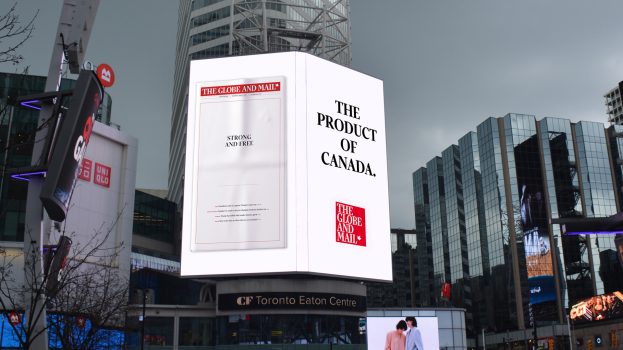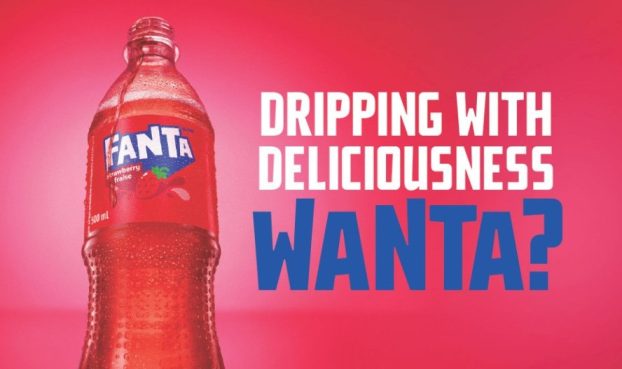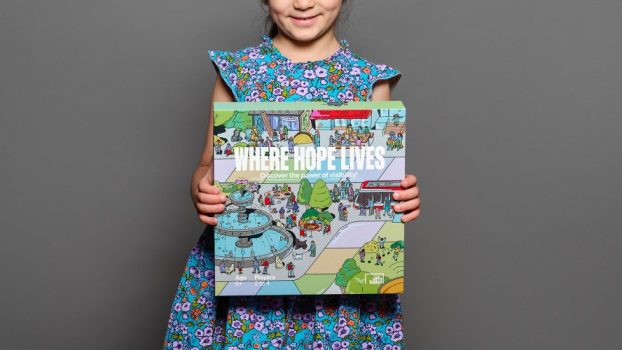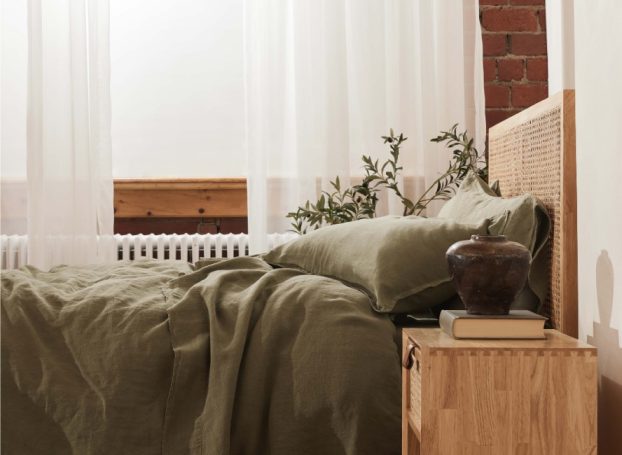It’s often referred to as the last mass medium, but out-of-home is going niche like never before.
Media buyers and planners have been refining O-O-H’s strategic targeting abilities for years now, by factoring in demographic, behavioural and consumption information to better define and reach their target consumers. Believe it or not, it’s finally reached the point where a marketer can use the medium to reach users of one brand while giving users of another brand in the same category a wide berth.
Mark Husak says these days O-O-H can be fine-tuned beyond demographics to factor in consumer behaviour, habits and attitudes, thanks to predictive modeling.
Husak, director of Advanced Technique Group and MindShare Consumer Insight for MindShare Canada in Toronto, says it’s a combination of art and science.
‘It could be recognizing this is a neighbourhood that has a higher preponderance of the kind of people we understand to be heavy purchasers of this kind of product. That’s the science of it.
‘The art is recognizing that there are people who don’t see signage just in their neighbourhood. There are key commuter paths that the outdoor companies are working with. It’s using the data we have in combination with other modeling available and coming up with the best buy given all the resources available.’
Husak says a recent campaign for a MindShare client illustrates how narrowly out-of-home can be targeted.
The client in this case has two brands in the same category but only one brand was to be supported by the campaign.
‘What we wanted to do was find a way of ranking small demographics on the basis of high consumption of the brand we’re advertising, combined with low consumption of the client’s other brand to minimalize cannibalization.’
In other words, Husak needed to reach people who used the brand being advertised – to reinforce brand loyalty – as well as people using a competitor’s brand, without impacting on those who already use a second, similar brand made by the client. Not an easy task.
MindShare accomplished this by first developing a profile of the target consumer using PMB data, particularly the brand usage segment. Those profiles were then applied to Psyte clusters from the neighbourhood segmentation system of MapInfo Canada (formerly Compusearch).
Psyte clusters, such as ‘Mortgaged in Suburbia,’ group consumers into 15 major lifestyle groups and 60 neighbourhood types using data from many sources, including ACNielsen, BBM Bureau of Measurement, Market Facts, NADbank, and PMB.
All of MindShare’s work is then added to the databases of the out-of-home companies to create the placement maps.
‘You want to get as much targeting as you can with as little spill to other groups as possible, but there are some tactical things to look at,’ Husak says. ‘Does the signage really appeal to people in the morning? What are the morning passes [commuter traffic] going to look like? Is the signage something you want to be as close to point-of-purchase as possible?’
Husak cautions that especially with highly-targeted campaigns, it is very important for the creative and media teams to work together.
‘They both have to be reflected, and that is key even beyond outdoor. In this age where there’s a lot more media to choose from and there’s a concentration on media as a discipline in and of its own, we also have to realize how much we rely on one another, media, creative and media suppliers.’
Aileen Grant, VP, group media director at OMD Canada in Toronto, says particularly for retail clients, strategic placement of out-of-home results in markedly increased sales.
For one client, the Dairy Farmers of Ontario, Grant says that not only are the board locations hand-picked, but the creative is adapted for each location to point consumers to restaurant chains such as Casey’s and East Side Mario’s. In this case the ads depicted fluffy whipped cream perched on various yummy deserts, and pointed passersby to restaurants where they could satisfy their sweet teeth right away.
Grant says this directional technique has been quite successful in driving sales for Dairy Farmers, and is an ongoing part of their advertising. But there is one drawback: hand-picked boards cost more.
‘I think the biggest challenge out-of-home companies have today is that a lot more clients are hand-picking their boards,’ she says, ‘so their inventory is being depleted in key locations. They’re having a tough time trying to balance giving clients a good mass campaign rate and trying to help those clients who want to be more specific.’
Grant says while tactical placement really delivers, she believes mass GRP out-of-home buys are still the most cost-effective and will continue to be the most common buys.
‘Out-of-home is truly a mass medium, probably one of the last there is. You can be very specific with your buys, but the cost-per-thousand goes way up. I think the majority of the campaigns will continue to be mass, partly because of cost.’
Many out-of-home media suppliers have their own research, database or mapping services that media buyers can use alone or along with deeper, proprietary research.
Kim Warburton, director of marketing for Toronto-based Mediacom, says the out-of-home giant has always been very serious about research. For the past five years it has been working with its own mapping system, SMART, the Strategic Mapping and Response Tool.
This database is based on Statistics Canada data, traffic flow and traffic volume information and additional data that is continually being added to the system.
Warburton says geodemographic mapping has helped advertisers such as Western Union and Bell Canada effectively stage campaigns that target specific ethnic neighbourhoods with advertising in the appropriate language.
Transportation behaviour, such as when areas have the highest incidence of traffic, when people go to work and when they come home, has long been taken into consideration by media buyers, but these days more detailed data is being put to more creative use.
For instance, Warburton says that rotating or tri-vision boards can be customized to co-ordinate with this daily coming and going by having advertising relevant to time of day, such as specialty coffee shops in the morning and beer, wine or food messages in the evening.
Behavioural and traffic mapping has other uses, Warburton says, such as noting that working women take as many as six side trips a week between work and home. Advertisers trying to reach these women can then look to targeting them during trips to school or shopping mall areas.
The bulk of Mediacom’s bookings continue to be for mass GRP campaigns, although Warburton says the overall incidence and sophistication of location-specific buys has been increasing recently.
‘We are seeing more extensive mapping. The requests are getting more sophisticated and the type of information is getting more sophisticated. Advertisers will give us pieces of information so we can layer it in with our database to give them customized mapping.’
For example, Warburton says a large multinational advertiser recently requested an amazing 42 geodemographic maps before it decided how to skew an outdoor campaign.
Darryl Nicholson, media director at Ammirati Puris in Toronto, says his agency no longer buys general coverage at all, but does all out-of-home placements using geodemographic mapping.
He calls it buying primetime outdoor, similar to TV primetime, where buying is focused on the best locations and best opportunities for exposure.
Ammirati first establishes hot zones as the areas to be bought through various qualifiers such as age, income and composition of households, says Nicholson. These areas are mapped for the buy and GRPs are configured to the neighbourhoods.
Nicholson works closely with Mediacom on these buys because of the sophistication of the company’s research and mapping capabilities – then adds in behaviour and consumption patterns specific to the client.
‘Out-of-home used to be about buying demographics just like TV – we’re going to buy women 18 to 49. You would just buy 50 marketing GRPs, or even lower, and then decide whether you were going to use posters or another format.
‘What we do now is multiple formats to effectively cover off a community or market – from murals, to superboards, to transit shelters right at the foot of the elevators as they walk out the doors.’
Nicholson has used this strategy for clients such as Franklin Templeton Funds, where financial districts were blanketed with multiple formats. For Labatt Breweries’ brands such as Stella Artois, neighbourhoods around key bar and restaurant establishments are covered in the Toronto, Ottawa and Calgary markets (see ‘Ammirati snares status-seekers for Stella,’ searchable at www.strategymag.com, for more details).
These buys are valued for the number of consumers reached at work or play, rather than the households in the area.
Nicholson says blitz campaigns work best for niche or narrowly targeted brands where the buyer really knows the consumer. It isn’t a worthwhile exercise for more broadly based brands in categories such as laundry detergent where bigger zones should be targeted.
The media landscape is so cluttered that buyers are always looking for ways to stand out. These strategies do that effectively, says Nicholson, as well as providing high impact for limited budgets or new product launches.
He says the tactic is getting quite popular – even with its premium prices and the high amount of effort required – and, like Grant, he’s noticing that managing inventory is getting more difficult for out-of-home companies.
‘You’ve got to get in early. The best out-of-home is harder and harder to get and it’s driving deadlines ahead. We’re buying out-of-home into 2002 right now and locking in locations.’
Viacom Outdoor (formed by the merger of transit advertising company TDI and Infinity Outdoor) offers another kind of O-O-H blitzing with its ‘station domination’ package, which includes every advertising space in a subway station, plus extras like wall, stair and floor coverings.
The company also recently began offering Canada’s first-ever subway train wraps, kicking off with a bright orange wrap for Bell Mobility’s Solo cellular phone plan last month.
Stephanie Guran, marketing manager of Viacom Outdoor in Toronto, says that, in general, she’s noticing that advertisers are asking about dominance or blitz campaigns more often than in the past.
‘It gives an advertiser the opportunity to create some buzz around their campaign and cut through the clutter a bit more. Even dominating the interior of one subway car, or wrapping a bus provides a lot more impact than mass buys.’
To date, Viacom hasn’t done any research on station domination campaigns in Canada, but U.S. studies indicate total recall of these campaigns to be at an impressive 72%.
Commuters also had positive feelings about the campaigns, calling them ‘eye-catching’ and ‘informative,’ and two-thirds of respondents expressed interest in finding out more about the product being advertised.























